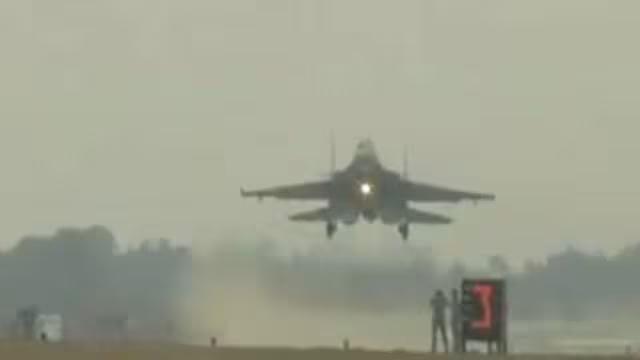
Why is IAF conducting fighter jets’ landing & take-off drill at Ganga Expressway in UP?
In a recent exercise, the Indian Air Force (IAF) conducted take-off and landing drills on the Ganga Expressway in Uttar Pradesh, showcasing its readiness to adapt to changing circumstances. The exercise, which included fighter jets like Rafale, aimed to assess the expressway’s potential as an alternative runway during times of war or national emergencies. This marks a significant milestone as it is the first airstrip on any expressway in India equipped to handle both day and night landings of jets.
The exercise was conducted over a period of two days, with fighter jets taking off and landing on the expressway during both day and night hours. The drill was a comprehensive test of the expressway’s infrastructure, including the runway, lighting, and communication systems. The IAF’s objective was to evaluate the expressway’s suitability as an emergency landing strip, which could be used in situations where conventional airfields are unavailable or under attack.
The Ganga Expressway, which stretches over 594 kilometers, is a major infrastructure project in India. Built at a cost of over ₹36,000 crores, it is designed to reduce travel time between Delhi and Allahabad by several hours. With its vast expanse and state-of-the-art infrastructure, the expressway has been identified as an ideal location for an emergency airstrip.
The IAF’s exercise on the Ganga Expressway is a significant development in India’s air defense strategy. In recent years, the country has faced several security challenges, including border tensions with Pakistan and China. The ability to use an alternative runway like the Ganga Expressway would provide the IAF with a strategic advantage, allowing it to maintain its air power even in the event of a conflict.
The exercise was a testament to the IAF’s ability to adapt to changing circumstances and think outside the box. With its focus on versatility and flexibility, the IAF is well-equipped to handle a range of scenarios, from natural disasters to national emergencies. The use of the Ganga Expressway as an emergency airstrip would not only provide the IAF with an additional capability but also enhance the country’s overall air defense posture.
The exercise also highlighted the importance of infrastructure development in supporting national security. The Ganga Expressway, with its state-of-the-art infrastructure and vast expanse, has the potential to play a critical role in India’s air defense strategy. The exercise demonstrated the IAF’s willingness to leverage existing infrastructure to support its operations, a trend that is likely to continue in the future.
In conclusion, the IAF’s exercise on the Ganga Expressway is a significant development in India’s air defense strategy. The use of the expressway as an emergency airstrip would provide the IAF with additional capabilities and enhance the country’s overall air defense posture. The exercise also highlights the importance of infrastructure development in supporting national security and the IAF’s willingness to adapt to changing circumstances.






